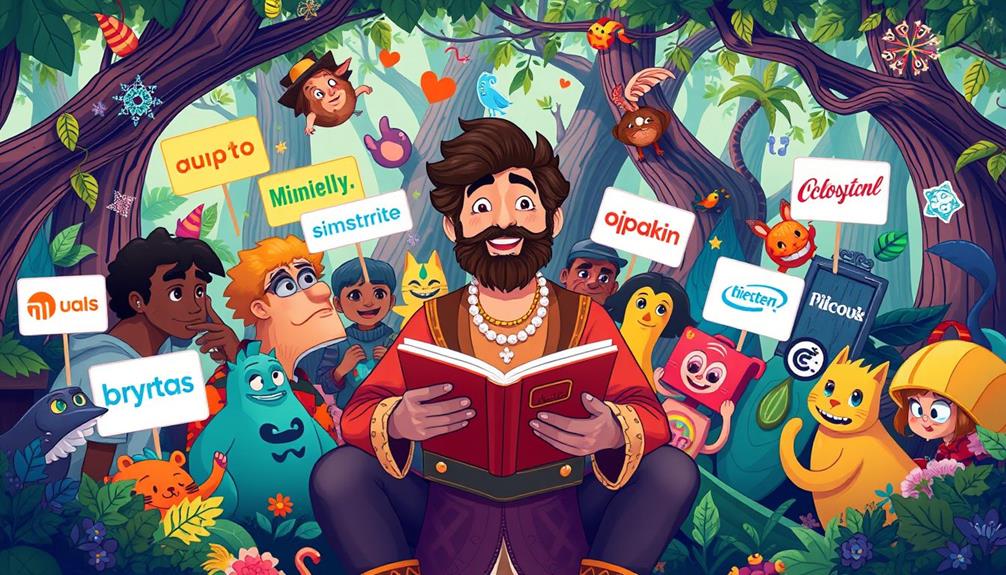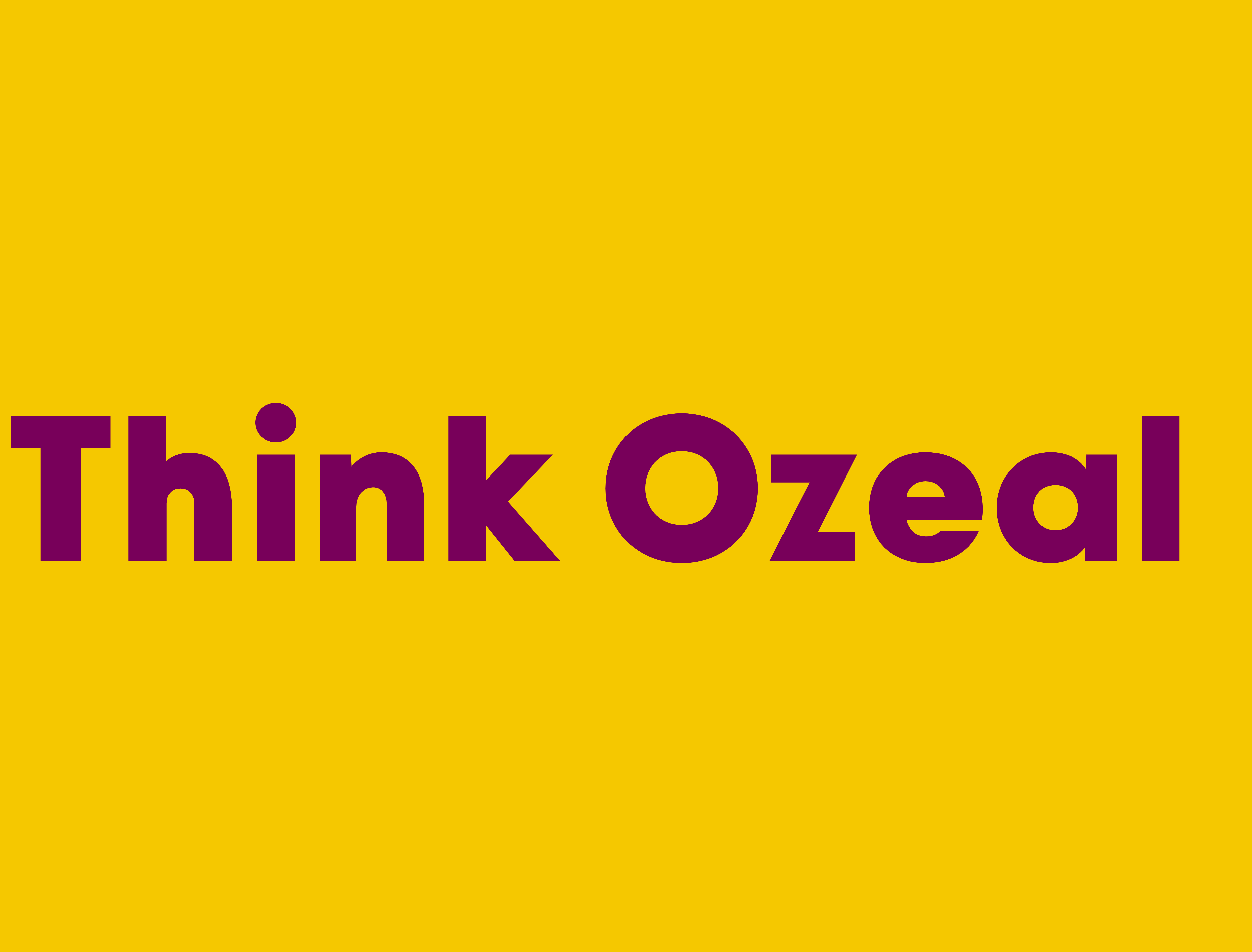Career & Entrepreneurship
Ethical Leadership: Its Power to Transform Business
Discover how The Impact of Ethical Leadership can drive positive change and success in your business. Unlock the potential for integrity-led growth.

Have you thought about leaders who really changed your life? Maybe it was a coach who stood by you, a mentor who guided your career, or a boss who made your team feel like family. These people show us the true power of ethical leadership. In today’s world, where doing the right thing is a real challenge, ethical leaders are more important than ever. They don’t just talk about good values – they bring big changes to businesses, build trust in their teams, and make our society better.
Think about the role of ethical leadership in your job. Leaders with strong morals encourage teamwork and responsibility. This sets the stage for achieving great things together. When they own up to mistakes and learn from them, it builds trust. This makes everyone more excited and committed to their work. Ethical leaders do more than just improve business. They also build strong connections, encourage smart thinking, and keep growing and learning.
Key Takeaways
- Ethical leadership is rooted in integrity, fostering trust and collaboration among teams.
- Effective leaders acknowledge mistakes, enhancing credibility and fostering a positive work environment.
- Organizations emphasizing ethical behavior attract loyal customers and talented employees.
- Younger generations prioritize social responsibility in their purchasing decisions.
- Investing in ethics training and clear communication of ethical standards is essential for any organization.
Introduction to Ethical Leadership
In today’s competitive world, learning about introduction to ethical leadership can really change things up. Ethical leaders think about everyone’s good, not just the company’s. Business ethics matter to them, making places we work full of trust and respect.
Talking about importance of ethical leadership shines more light with recent stats. By 2025, Generation Z will make up 25 percent of workers. They put a lot of value on ethics. Companies that get this right see their workplaces thrive, keeping employees happy and engaged.
On the flip side, lacking ethical leadership can really hurt. Take Wells Fargo’s scandal, for example. It hit their profits hard, losing 50 percent in just three months. This shows how bad it can get without strong ethics in place.
But there are good stories, like Johnson & Johnson’s way of handling the Tylenol crisis. They reacted fast to protect their customers. Such actions might cost a lot, but prove a solid commitment to people’s safety. Ethical leadership leads to happy employees and strong companies. It shows doing right is key to lasting success.
The Definition of Ethical Leadership
Ethical leadership is key in forming an organization’s culture. It shows and fosters right conduct through personal deeds and relationships with others. It stresses making choices based on ethics, matching decisions with moral values.
This style of leadership promotes moral leadership. Leaders don’t just expect ethical acts from their teams but live out these virtues themselves. They build a positive ethical environment, increasing teamwork and morale. Ethical leadership reduces risks of scandals, building trust with partners and clients.
Ethical leaders set the standard by their actions. They treat everyone equally and handle stress well. Practices like open talks, fair mediations, and unbiased choices improve the work atmosphere. Bad leadership can hurt team spirit. But good leaders, who back their staff and stay calm in tough situations, motivate and elevate everyone.

Why Ethical Leadership is Crucial in Today’s Business Landscape
The necessity of ethical leadership is more clear than ever today. Leaders with a focus on ethics can navigate today’s challenges well. They ensure everyone is treated fairly and has the same chances.
Ethical leaders are all about fairness and respecting diversity. They create an environment where all views are welcomed. This makes the organization more flexible and strong.
Companies that value ethical leadership gain a lot. Ethical practices lead to happier workers and better job satisfaction. This boosts loyalty and the company’s output.
Also, ethical leaders focus on helping their communities. They think about how their decisions affect everyone involved. This builds a culture of respect and trust with employees and customers.
In changing business worlds, ignoring ethics can cost a company greatly. It can harm their reputation and lead to legal trouble. Companies focused on ethics create a strong base for long-term success. This attracts good attention from all sides.
| Benefits of Ethical Leadership | Impact on Organization |
|---|---|
| Enhanced Employee Engagement | Increased productivity and loyalty |
| Promotes Diversity and Inclusion | Improved team dynamics and creativity |
| Strengthens Reputation | Attracts customers and investors |
| Encourages Corporate Social Responsibility | Positive community impact and brand image |
| Reduces Risk | Less likelihood of legal issues and scandals |

The Impact of Ethical Leadership
Ethical leadership greatly affects an organization, shaping its dynamics. It leads to a healthy working atmosphere. Leaders who practice ethical values boost trust, cultivate a great work culture, and increase employee involvement.
Building Trust and Transparency
Effective teams start with trust in their leaders. Honest and open communication by leaders builds a space where everyone is important and can share open-mindedly. This environment allows for sharing new ideas and worries, creating a sense of shared duty.
Fostering a Positive Work Environment
A positive work culture is key and relies on respect, being inclusive, and working together. Ethical leaders make these ideals top priorities. This approach welcomes different views and new ideas. It also makes the team more creative and better at solving problems.
Encouraging Employee Engagement and Satisfaction
Ethical leaders play a big role in making employees more engaged and happy. Studies show that good leadership and job satisfaction are linked. This leads to less employee turnover and more productivity. When people feel a strong connection to their leaders and the company’s mission, they give their best effort.

| Aspect | Impact of Ethical Leadership |
|---|---|
| Trust in Leadership | Enhances communication and openness |
| Positive Workplace Culture | Promotes inclusivity and creativity |
| Employee Engagement | Increases job satisfaction and reduces turnover |
| Overall Impact | Contributes to organizational success and sustainability |
Characteristics of Effective Ethical Leaders
Effective ethical leaders have unique traits that make them stand out. These traits help in their success and build a trustworthy and honest team atmosphere. Knowing what makes an ethical leader is key for anyone looking to be a better leader.
Integrity and Authenticity
At the core of ethical leadership is integrity. Leaders with integrity act true to their values and principles. This truthfulness makes others trust them. It creates an environment where everyone feels safe to speak openly.
Accountability and Fairness
Ethical leaders are accountable. They own up to their actions and decisions. They treat everyone fairly, making a team where respect is common. This behavior strengthens team bonds and makes people feel they belong, which helps keep employees around longer.
Emotional Intelligence and Communication Skills
Being emotionally intelligent is crucial for ethical leaders. They understand and empathize with others. This ability improves their communication. It leads to a team where everyone feels their input matters. This makes for a stronger, more unified team.
| Characteristic | Description | Impact on Team |
|---|---|---|
| Integrity and Authenticity | Alignment of actions with values, showcasing honesty and moral courage. | Builds trust, encourages transparency, and inspires confidence. |
| Accountability and Fairness | Takes responsibility for actions, promotes a culture of respect and equality. | Fosters an inclusive environment, leading to improved morale. |
| Emotional Intelligence | Ability to empathize and understand team members’ feelings and perspectives. | Encourages open communication and teamwork, resulting in higher engagement. |

How Ethical Leadership Drives Organizational Change
Ethical leadership is crucial in shaping organizational change. Leaders with strong ethical values set a standard for their teams. They create a culture shift, making the workplace better for everyone.
Studies show ethical leadership makes employees trust their managers more. This trust leads to a willingness to accept and support change. Leaders who are true to their values inspire teamwork in facing new challenges.
When leaders focus on ethics, they build a culture that welcomes new ideas. This kind of environment encourages innovation. It helps a company stay competitive by adapting to new trends.
Research reveals ethical leadership boosts employee happiness and engagement. Leaders who show compassion and responsibility keep morale high during changes. This is essential for the organization’s success.

Ethical leadership isn’t just about following rules. It’s about creating a workplace where everyone feels valued and heard. This approach leads to a strong ethical culture that embraces change. Ethical leadership plays a big part in dealing with organizational challenges today.
The Role of Ethical Leadership in Hiring and Retaining Talent
Ethical leadership is key to an organization’s success in hiring and keeping talent. It creates a culture based on values and integrity. This helps attract great candidates and keeps current employees happy and loyal.
Attracting a Values-Driven Workforce
Companies like Patagonia and Salesforce are famous for their ethical leadership. They attract people who want their work to reflect their personal values. They focus on social responsibility and sustainable practices. This attracts a workforce driven by these values.
Employees feel more connected to these organizations. They see their own values reflected in their work. This shows how ethical leadership helps in finding people who value integrity in their careers.
Connecting with Generation Z Employees
By 2025, Generation Z will make up a large part of the workforce. They look for jobs where leaders care about social responsibility and ethics. Companies focusing on ethical leadership are more appealing to them. They also have happier employees, which helps keep talent for longer.
Organizations with ethical practices often have lower turnover rates. Winning over Generation Z means being transparent and accountable. Leaders must showcase the values that matter to these young professionals.

Examples of Ethical Leadership in Action
Ethical leadership is vital, especially during tough times. Through real scenarios, we see how leaders deal with crises ethically. They use integrity and transparency, setting great examples of ethical decision-making.
Case Study: Johnson & Johnson’s Response to the Tylenol Crisis
In 1982, seven people died because of poisoned Tylenol capsules. Johnson & Johnson quickly recalled 31 million Tylenol bottles. This move, costing over $100 million, showed their dedication to safety. It proved that putting public welfare first builds brand trust during crises.
JetBlue’s Customer Bill of Rights
In 2007, JetBlue faced a massive issue, canceling over 1,000 flights because of tarmac delays. They owned up to the mistake. They introduced a Customer Bill of Rights for transparency and fairness. This action highlighted JetBlue’s ethical leadership, focusing on customer trust and happiness.
Consequences of Unethical Leadership: The Wells Fargo Scandal
The Wells Fargo scandal in 2016 showed the impact of unethical actions, like making fake accounts. This hurt the bank’s image badly. It’s a lesson in the need for honesty and accountability in leadership to avoid such crises.

Strategies to Cultivate Ethical Leadership
To effectively cultivate ethical leadership, adopt strategies emphasizing ethical commitment. Develop clear communication channels and provide ethics training. These steps are crucial for encouraging ethical leadership in your organization.
Encouraging Open Communication and Feedback
Leaders who communicate openly create a safe space for employees. This space allows workers to voice concerns and share feedback comfortably. Establishing these channels builds trust and transparency. It lets team members speak up without fear. This method strengthens the bond between leaders and staff, making everyone feel valued and part of the conversation.
Implementing Ethics Training Programs
Regular ethics training shows employees the company’s values and expected behaviors. It’s key for promoting ethical behavior throughout the organization. By focusing on ethics training, you highlight the importance of making good choices. You also help employees handle ethical issues. A committed approach to ethics training proves your dedication to ethical leadership and integrity culture.

Conclusion
The importance of ethical leadership is huge in today’s fast-paced business world. Ethical values lead to better business and a trusted name in the community. Businesses that follow ethical rules often attract loyal customers and happy employees.
This creates a cycle of engagement and productivity important for long-term success. Ethical leadership helps organizations stand out in a crowded market. Trust in business is now higher than in media and government.
Companies focused on ethics build strong relationships with everyone involved. This leads to better teamwork and employee motivation. Trust also makes strong partnerships possible, helping businesses and communities grow.
Putting ethics first is crucial for your company and for setting industry standards. As more people demand ethical practices, embracing them puts you ahead. This shows the big impact of ethical leadership in today’s complex business world.
FAQ
What is ethical leadership?
Why is ethical leadership important in today’s business environment?
How does ethical leadership impact organizational culture?
What are the characteristics of effective ethical leaders?
Can ethical leadership influence recruitment and retention strategies?
What are some examples of ethical leadership in action?
How can organizations cultivate ethical leadership?
What is the relationship between ethical leadership and business transformation?
Career & Entrepreneurship
Building a Billion-Dollar Brand: The Secrets of Entrepreneurial Success!
Achieving a billion-dollar brand requires a unique strategy—discover the secrets that can transform your entrepreneurial vision into reality!

To build a billion-dollar brand, you need to hone your unique value proposition that sets you apart from competitors. Actively listen to consumer feedback; it's crucial for fostering loyalty and trust. Make changes based on insights to keep customers engaged and satisfied. Balancing speed and caution is essential while maneuvering market trends that can shape your strategy. Don't forget to create memorable experiences that resonate with your audience—authentic stories and exceeding expectations go a long way. With dedication and the right approach, you can pave your path to success. Discover more strategies to elevate your brand's journey ahead!
Key Takeaways
- Define a unique value proposition (USP) that addresses specific customer pain points and differentiates your brand from competitors.
- Actively leverage consumer feedback to enhance product offerings and build a loyal customer base through trust and engagement.
- Celebrate team achievements and recognize contributions to foster a motivated workforce that drives brand success.
- Stay informed on market trends and emerging technologies to seize growth opportunities while maintaining long-term sustainability.
- Create memorable brand experiences that resonate with customers through authenticity, storytelling, and exceeding their expectations.
Defining Your Unique Value Proposition

In a crowded marketplace, defining your Unique Value Proposition (USP) is essential for standing out. It's what differentiates your brand from competitors and attracts customers.
To build a business that thrives, you need a compelling USP that resonates with your target audience. Look at successful brands like OxiClean; their USP emphasizes superior stain removal, directly addressing consumer pain points.
Start by analyzing your customers' needs and preferences. What challenges do they face, and how can your product or service provide a solution? This understanding will help you craft a USP that speaks directly to them.
Additionally, effective product naming and strategic market positioning can enhance your USP, making it memorable and relatable.
Leveraging Consumer Feedback

To build a billion-dollar brand, you need to listen actively to your customers and implement changes based on their feedback.
Engaging with your audience not only fosters trust but also positions your brand as innovative in their eyes.
When you make adjustments that resonate with consumer needs, you create a loyal customer base that drives long-term success.
Importance of Listening Actively
Listening actively to consumer feedback is essential for building a strong brand. When you tune into what your customers are saying, you can identify their pain points and preferences, allowing you to improve your products and services effectively. This responsiveness not only enhances customer satisfaction—studies show businesses that seek and implement feedback can see a 10% boost in satisfaction—but also helps to build loyalty and increase sales.
Incorporating customer testimonials into your marketing strategies can further amplify your brand's credibility. When consumers see that you prioritize their voices, they perceive your brand as more relatable and authentic. Regular engagement through surveys, social media, and direct communication keeps you informed about market trends and evolving consumer demands.
Look at brands like OxiClean, which excel at leveraging consumer feedback. They've turned insights into actionable strategies, greatly boosting their recognition and loyalty.
Implementing Changes Effectively
Gathering and acting on consumer feedback can transform your brand's potential and drive significant growth.
As a business owner, implementing changes effectively based on this feedback is essential. By doing so, you not only enhance customer satisfaction but also build a loyal community around your brand.
Additionally, utilizing online platforms to gather insights can streamline the feedback process and lead to better engagement with your audience, making it easier to identify top platforms for earning money online.
Consider these impactful advantages of leveraging consumer feedback:
- Increased Customer Loyalty: 60% of consumers feel more connected to brands that listen and respond.
- Higher Conversion Rates: Active engagement with feedback can boost sales by up to 30%.
- Trust Through Social Proof: 79% of consumers trust online reviews as much as personal recommendations.
- Continuous Improvement: 70% of companies prioritizing feedback report enhanced customer satisfaction.
- Willingness to Share Feedback: 88% of consumers are open to providing insights if they know it'll lead to positive changes.
Building Trust Through Engagement
When you actively engage with consumers and seek their feedback, you lay the groundwork for trust and loyalty. Leveraging consumer feedback is essential for building a successful brand. Studies show that 70% of consumers are more likely to purchase from brands that value their opinions and act on suggestions.
By responding to feedback, you can boost customer satisfaction by up to 33%, strengthening relationships that encourage repeat business. Additionally, understanding the importance of a personal budget can help you allocate resources effectively while engaging with customers.
Incorporating testimonials and real-life experiences into your marketing strategy further enhances your credibility. With 92% of consumers trusting recommendations from friends and family over traditional advertising, showcasing authentic voices can make a significant impact.
Social media platforms offer an excellent avenue for gathering immediate feedback, allowing you to adapt quickly to consumer preferences and concerns.
Moreover, companies that prioritize customer feedback often see revenue growth rates 5-10 times higher than those that don't. By making consumer engagement a core part of your business strategy, you not only build a successful brand but also foster a loyal customer base that feels valued and heard.
Embracing this approach will set you apart in a competitive marketplace.
Balancing Speed and Caution

In the fast-paced world of entrepreneurship, striking the right balance between speed and caution is essential for success. You need to respect your stakeholders' time while also launching your business promptly to seize market opportunities.
However, making informed decisions quickly is vital, ensuring that immediate actions don't compromise your long-term sustainability. As industries evolve, understanding the implications of emerging technologies, such as AI, becomes increasingly important for strategic growth and risk management, especially in roles like AI Ethicist Jobs.
Consider these emotional triggers as you navigate this balance:
- The thrill of seizing market opportunities
- The fear of making hasty decisions
- The satisfaction of sustainable growth
- The frustration of missed chances
- The pride in a well-built foundation
A strategic approach to growth means distinguishing between easy, risky expansion and sustainable growth based on solid foundations. Excessive reliance on venture capital can lead to rash decisions.
Instead, focus on organic growth strategies that allow for calculated risk-taking. You can also engage in selective conflict and utilize stoicism, maintaining clarity and focus on positive outcomes, even amid rapid market changes.
Building a Supportive Team Culture

To build a supportive team culture, you need to foster open communication where everyone feels heard.
Incorporating principles of design thinking can enhance collaboration and innovation within your team.
Encouraging trust and respect among team members creates an environment where people want to stay and contribute.
Celebrating team achievements not only boosts morale but also strengthens your team's bond and overall performance.
Fostering Open Communication
Open communication acts as the backbone of a supportive team culture, driving trust and transparency among team members. When you foster this environment, you'll see a remarkable shift in team dynamics, leading to higher satisfaction and retention.
I highly recommend you encourage regular feedback sessions, where everyone feels free to share their thoughts and ideas.
Here are some benefits of fostering open communication:
- Enhanced collaboration: Team members work better together, sharing insights and solutions.
- Increased innovation: A culture that values input sparks creativity and new ideas.
- Stronger relationships: Open dialogue builds trust, making everyone feel valued.
- Improved problem-solving: When questions are welcome, challenges are tackled more effectively.
- Lower turnover rates: Organizations with strong communication practices see 50% less employee turnover.
To enhance communication, consider implementing tools like team messaging apps or project management software. These can streamline updates and keep everyone aligned on goals.
Encouraging Trust and Respect
Building a culture of trust and respect is vital for any team aiming for success. When you establish trust within your team, you'll notice increased employee engagement, leading to 50% higher productivity and 76% lower stress levels.
Open communication is key; when you foster transparency, you help prevent stress caused by misunderstandings, as 70% of employees cite lack of communication as a major issue. Additionally, creating a supportive environment where team members can share their personal influences can enhance individual contributions to the team's overall success, leading to a unique blend of ideas that benefit everyone effective preparation maximizes consultation outcomes.
Team-building activities are another effective way to enhance relationships and trust among team members. With 92% of employees indicating that such initiatives improve collaboration, you can greatly boost your team's dynamics.
Additionally, recognizing individual contributions reinforces respect, and companies that prioritize this see 31% lower voluntary turnover rates.
Creating a supportive environment that values feedback is essential, too. Research shows organizations focused on employee feedback experience a 14.9% lower turnover rate.
By promoting an atmosphere where team members feel valued and heard, you cultivate mutual respect. Remember, trust isn't built overnight; it's a continuous process that pays off regarding team cohesion and overall success.
Embrace these practices, and watch your team thrive.
Celebrating Team Achievements
Recognizing and celebrating team achievements can greatly enhance the supportive culture you've worked hard to establish. When you take the time to acknowledge your team's hard work, you create an environment where everyone feels valued and motivated.
This sense of belonging can lead to increased productivity and job satisfaction.
Here are a few impactful ways to celebrate team achievements:
- Host recognition events that highlight individual and team milestones.
- Offer small rewards or tokens of appreciation that resonate personally.
- Share success stories in team meetings to inspire others.
- Create a wall of fame showcasing outstanding contributions.
- Encourage peer-to-peer recognition, allowing team members to celebrate each other.
Organizations that prioritize celebrating team achievements are three times more likely to have engaged employees. Regular recognition enhances collaboration, strengthens bonds, and promotes a positive workplace culture.
By celebrating both big and small milestones, you can greatly reduce turnover rates and increase overall performance by up to 20%.
Navigating Market Trends

Steering through market trends is essential for brands aiming to establish themselves in today's competitive landscape. Understanding shifts in consumer behavior, like the rise of nostalgia-driven themes, can open up unique opportunities. For instance, a recent MySpace clone quickly gained 1 million users, showcasing the power of nostalgia.
Additionally, leveraging social media can amplify your brand's visibility. Taco Bell's Mountain Dew Baja Blast Gelato launch generated immense buzz, demonstrating how consumer engagement can elevate product success.
Here's a quick overview of current market trends to evaluate:
| Trend | Impact on Brands | Action to Take |
|---|---|---|
| Nostalgia-driven behavior | Creates unique marketing opportunities | Develop nostalgic-themed products |
| Urban entrepreneurship growth | Access to resources and talent | Focus on cities with high startup activity |
| Younger demographics' interest | Opens avenues for innovation | Tailor offerings to younger audiences |
| Social media engagement | Enhances brand visibility | Foster interactive campaigns |
| Diverse educational backgrounds | Generates innovative solutions | Embrace varied perspectives |
Creating Memorable Brand Experiences

In today's fast-paced marketplace, creating memorable brand experiences is essential for capturing customer attention and fostering loyalty. By engaging customers through unique events and innovative marketing strategies, you can greatly enhance brand recognition.
Think about how successful businesses evoke emotions through storytelling—just look at Nike and Apple. They create strong connections that keep customers coming back.
To help you craft unforgettable experiences, consider these key elements:
- Authenticity: Share real stories that resonate with your audience.
- Feedback: Utilize customer testimonials to build trust and relatability.
- Exceed Expectations: Under-promise and over-deliver to create exceptional moments.
- Social Media Buzz: Encourage sharing through limited-time offers or exciting events.
- Engagement: Foster interaction through immersive experiences.
Frequently Asked Questions
How to Create a Billion Dollar Brand?
To create a billion-dollar brand, you need a unique selling proposition that sets you apart from competitors.
Focus on developing a strong identity that resonates with your audience. Gather customer feedback to refine your offerings and build trust.
Use direct branding strategies to connect personally with consumers.
How to Build a Billion Dollar App Summary?
Did you know that over 90% of apps are abandoned after just one use?
To build a billion-dollar app, start by identifying your Unique Selling Proposition (USP) that addresses a specific market need. Conduct thorough research to understand user preferences and pain points.
Incorporate feedback into your development process, and utilize strategic marketing to attract users.
Prioritize continuous updates based on user input to maintain relevance and guarantee sustainable growth.
How to Build a How to Build a $1 Billion App? Billion App?
To build a $1 billion app, start by identifying a unique value proposition that addresses a specific user pain point.
Engage your target audience through beta testing and gather feedback to enhance user experience.
Utilize effective marketing strategies, like influencer partnerships, to drive acquisition.
Implement data analytics for real-time improvements, and consider a subscription-based model for recurring revenue.
How to Grow From a Billion Dollar Company to a Trillion Dollar Company?
To grow from a billion-dollar company to a trillion-dollar company, you need to focus on scalable innovation.
Invest in research and development to stay ahead of trends. Build strategic partnerships and consider acquisitions to expand your global reach.
Use advanced data analytics and AI to optimize operations and enhance customer experiences.
Diversify your offerings while keeping a strong brand identity, and implement sustainable practices to attract conscious consumers and investors.
Conclusion
In your pursuit of building a billion-dollar brand, remember that success isn't just about the numbers—it's about connection. Research shows that companies with strong emotional ties to their customers outperform others by 85%. By understanding your unique value, embracing feedback, and fostering a supportive culture, you can create lasting brand experiences that resonate. So, trust the process, adapt to market trends, and watch as your entrepreneurial vision transforms into a thriving reality. Your brand's success story starts today!
Career & Entrepreneurship
Stand Out With Creative Storytelling: the Secret to Building an Iconic Brand!
Master the art of creative storytelling to elevate your brand’s identity—uncover the secrets that make iconic brands unforgettable.

Creative storytelling is essential for making your brand iconic. It helps you connect emotionally with your audience, fostering loyalty and trust. By sharing authentic narratives that reflect your core values, you engage consumers on a deeper level. Successful brands like Apple and Nike showcase the power of compelling stories. To stand out, use universal character archetypes and involve your customers in the narrative. This participation not only amplifies your brand voice, but it also strengthens community ties. With effective strategies, you can measure your storytelling impact and adapt to audience feedback. Want to discover more about elevating your brand?
Key Takeaways
- Authentic storytelling fosters trust and emotional connections, essential for building a loyal customer base and an iconic brand.
- Utilizing universal character archetypes enhances relatability, allowing audiences to emotionally invest in your brand's narrative.
- Engaging customers in the storytelling process creates community and amplifies brand voice, making the brand more memorable.
- Consistent messaging across platforms reinforces authenticity and builds credibility, crucial for standing out in a saturated marketplace.
- Regularly assessing audience feedback and adapting narratives ensures your storytelling evolves and remains relevant to current consumer interests.
Importance of Brand Storytelling

Harnessing the power of storytelling, brand storytelling plays an essential role in connecting with your audience on an emotional level. When you craft a compelling brand storytelling strategy, you engage your audience in a way that fosters loyalty and builds a lasting connection. This isn't just about selling a product; it's about weaving narratives that reflect your core values and resonate deeply with consumers.
Successful brands like Apple and Nike show how effective storytelling can differentiate you in a crowded market. They convey their values not just through ads but through powerful stories that engage emotions and spark connections. By consistently reinforcing your core values across all customer touchpoints, you establish a strong brand identity that your audience recognizes and trusts.
Moreover, emotional engagement through storytelling activates specific brain areas tied to feelings, enhancing audience retention and loyalty. When your stories educate and entertain, they become memorable, setting you apart from your competitors.
In today's marketing landscape, brand storytelling isn't just an option; it's a necessity for creating meaningful connections that drive long-term success.
Elements of Effective Storytelling

When crafting your brand story, authenticity is key to building trust with your audience.
By embracing philosophical exploration in your narratives, you can uncover deeper meanings that resonate emotionally, making your message more impactful.
Additionally, involving customers in the storytelling process can foster a sense of community and participation that truly amplifies your brand's voice.
Authenticity Builds Trust
Authenticity plays an essential role in building trust, as consumers gravitate towards brands that share genuine stories reflecting their core values and beliefs. When you prioritize authenticity in your brand storytelling, you create a narrative that resonates with your audience.
To achieve this, it's important to communicate your core values consistently across all touchpoints, reinforcing your brand's identity and making it relatable. Additionally, incorporating design thinking principles can enhance your storytelling by emphasizing user-centric solutions and fostering a deeper emotional connection with your audience.
Transparency is another significant element. By being open about your practices—such as providing clear product descriptions and demonstrating ethical behavior—you cultivate trust among consumers who are often skeptical in today's marketplace.
Authentic storytelling helps counteract misinformation and the allure of social media perfection, allowing you to establish credibility through relatable narratives.
Moreover, engaging stories rooted in authenticity foster deeper connections with your audience, nurturing long-term loyalty. When people see that your brand stands by its values, they're more likely to engage and form lasting relationships.
Ultimately, by focusing on authenticity in your brand storytelling, you create an environment where trust flourishes, setting the stage for your brand to stand out in a crowded landscape.
Emotional Resonance Matters
Emotional resonance is the heartbeat of effective storytelling, drawing audiences in and forging connections that go beyond superficial interactions. When you tap into this emotional depth, your brand strategy transforms, fostering loyalty and engagement that cold facts simply can't achieve.
By crafting narratives that resonate with your audience, you create memorable experiences that stick. In the world of marketing, understanding your audience's emotional triggers can markedly enhance engagement, much like how family photoshoot fails often evoke laughter and connection through relatable experiences.
To enhance emotional resonance in your storytelling, consider these key elements:
- Authentic Narratives: Communicate your core values through genuine stories to build trust and credibility.
- Universal Character Archetypes: Use familiar characters to enhance relatability, allowing audiences to see themselves in your narrative.
- Engaging Storytelling: Focus on compelling plots that evoke emotions, making your brand more memorable.
- Shared Experiences: Create opportunities for your audience to connect with your brand's story, fostering a sense of community.
Engage Through Participation
Storytelling becomes truly powerful when it invites your audience to step into the narrative. When you engage through participation, you turn your audience from passive observers into active contributors, creating a sense of community and connection that boosts brand loyalty.
By involving customers and employees in the storytelling process, you craft a collaborative narrative that resonates more deeply with everyone.
Utilizing universal character archetypes in your storytelling makes it relatable, encouraging emotional investment and participation. This connection allows your audience to see themselves in your story, fostering a stronger bond with your brand.
Addressing social and environmental issues through your narratives not only enhances relevance but also inspires meaningful engagement.
Your brand stories should spark inspiration, inviting your audience to share their experiences and insights. When they feel a part of the journey, they're more likely to advocate for your brand and contribute to its evolution.
Strategies for Successful Storytelling

Crafting compelling narratives requires a strategic approach that resonates with your audience. To create an impactful brand story, you should consider these effective storytelling strategies:
- Utilize universal character archetypes: This enhances relatability and creates a deeper emotional connection with your audience. For instance, the journey of celebrities like Caleb Coffee, who survived a 60-80 foot cliff fall exemplifies resilience and can inspire your brand's narrative.
- Develop signature stories: Highlight your unique brand attributes to make your narrative memorable and engaging for consumers.
- Test your storytelling methods: Start on a smaller scale before a full-scale launch to guarantee your story effectively resonates with your target audience.
- Involve customers and employees: Their real experiences help create authentic narratives that foster trust and connection.
Overcoming Storytelling Challenges

Steering through the complexities of brand narratives can be intimidating, but overcoming storytelling challenges is vital for maintaining audience engagement.
To keep your storytelling relevant, you must actively maintain and evolve your brand story even after it's approved. Stagnation can lead to audience disinterest, so adapt your narrative to reflect current trends and consumer interests. Implementing strategies from effective keyword research can help you better understand what resonates with your audience and refine your storytelling approach.
In a saturated marketplace, differentiating your brand through storytelling is essential. A unique brand identity helps you stand out, ensuring your audience can easily recognize and connect with you.
Consistent messaging across all platforms reinforces your brand identity and builds customer trust, so avoid mixed signals that could confuse your audience.
Don't forget to regularly assess and refine your storytelling strategies based on audience feedback. This alignment with consumer expectations will help you remain relevant.
Additionally, leverage successful storytelling campaigns as benchmarks. By identifying effective techniques, you can improve your future marketing efforts and keep your brand story engaging.
Measuring Storytelling Impact

How can you truly know if your brand's story is making an impact? Measuring storytelling effectiveness involves a mix of metrics and feedback that reveal how well your brand story resonates with your audience.
Here are some key areas to focus on:
- Audience Engagement: Track likes, shares, and comments to assess how your storytelling strategies are performing.
- Brand Loyalty: Analyze repeat purchases and customer retention rates to understand the long-term effects of your storytelling on consumer relationships.
- Social Media Sentiment: Monitor interactions and conduct sentiment analysis to see how well your brand story resonates, pinpointing areas for improvement.
- Consumer Perception: Use surveys or focus groups to evaluate shifts in attitudes and preferences after your storytelling initiatives.
Exemplary Brands and Their Successes

Several brands have mastered the art of storytelling, effectively connecting with their audiences and driving success. Paynter Jacket stands out by creating anticipation through insider access, emphasizing sustainability and quality. This narrative not only engages customers but also builds a community around shared values. Similarly, BYBI Beauty showcases its commitment to natural and vegan ingredients, appealing to eco-conscious consumers through authentic storytelling.
Both brands illustrate how compelling narratives can drive engagement and boost sales, proving that authenticity is key in brand storytelling.
| Brand | Storytelling Focus | Success Outcome |
|---|---|---|
| Paynter Jacket | Insider access, sustainability | Strong community engagement |
| BYBI Beauty | Natural ingredients, eco-friendliness | Increased consumer loyalty |
| Both | Authenticity and connection | Enhanced brand recognition |
Paynter's growth from a beauty blog to a thriving brand is a demonstration of a strong narrative that champions female entrepreneurship. Meanwhile, BYBI's use of recyclable packaging aligns with its ethos, reinforcing its storytelling success. These exemplary brands show that a powerful story can transform a brand into an iconic player in its market.
Frequently Asked Questions
How Do You Build a Brand Through Storytelling?
To build a brand through storytelling, start by defining your brand's purpose and core values.
Make certain these values shine through in every narrative you share.
Create engaging, emotional stories that invite your audience to connect with your journey.
Use relatable characters and unique elements that highlight what sets you apart.
Regularly seek feedback to refine your approach, and measure engagement to guarantee your stories resonate and evolve with your audience.
How Is Storytelling Used to Strengthen a Brand?
Storytelling's like a bridge connecting you to your audience, strengthening your brand in the process.
When you share authentic narratives, you create emotional connections that foster loyalty beyond mere transactions.
By using universal character archetypes, your audience can see themselves in your story, enhancing engagement.
Plus, as you measure audience reactions, you can refine your narratives, ensuring they resonate and build trust, making your brand more relatable and memorable.
What Is the Role of Storytelling in Brand Building?
Storytelling plays an essential role in brand building by creating emotional connections with your audience.
When you share authentic narratives that reflect your brand's values, you foster trust and credibility. This engagement goes beyond transactions, making customers feel part of your journey.
By using relatable characters and scenarios, your stories resonate more deeply, encouraging loyalty.
Ultimately, effective storytelling distinguishes you in a crowded market, helping your brand become memorable and impactful.
What Are the Essentials of Brand Storytelling?
When you think about brand storytelling, picture a campfire gathering where everyone's engaged, sharing tales that resonate.
The essentials of effective brand storytelling include authenticity, emotional connection, and clarity. You want your audience to feel your brand's true values.
Use relatable characters and consistent messaging across all platforms to reinforce your identity. By inviting participation and aligning with audience expectations, you'll transform customers into passionate advocates who deeply connect with your brand's narrative.
Conclusion
Just like a masterful bard weaving tales around a crackling fire, your brand's story can captivate hearts and minds. By embracing the art of storytelling, you're not just selling a product; you're inviting your audience on an unforgettable journey. Remember, every great tale has its trials and triumphs. So, embrace the quest, share your narrative, and watch your brand shine like a star in the night sky, leaving a lasting impression on all who encounter it.
Career & Entrepreneurship
How to Become a Successful Creative Entrepreneur: Tips You Need Now!
Transform your passions into profit with essential tips for creative entrepreneurship that will ignite your journey to success! Discover what steps to take next.

To become a successful creative entrepreneur, start by discovering your unique voice and defining your business idea around your passions. Conduct market research to understand trends and customer needs, and develop a solid business plan that outlines your strategies. Choose a business structure that protects your interests, and invest time in crafting a strong brand identity. Utilize effective marketing strategies to boost your visibility, and engage actively with your community to foster connections. Consistency is key to building your online presence. Keep exploring these vital steps to access your entrepreneurial potential further!
Key Takeaways
- Discover and hone your unique creative voice through self-reflection and experimentation with various art forms.
- Conduct thorough market research to identify consumer needs, trends, and gaps in the market.
- Develop a comprehensive business plan outlining your unique offerings, target audience, and marketing strategies.
- Establish a recognizable brand identity by focusing on consistent visual aesthetics and legal protections like trademarking.
- Build an online presence through a professional website and active engagement on social media platforms to attract and connect with your audience.
Discover Your Creative Voice

Discovering your creative voice is essential for standing out in a crowded marketplace. It allows you to express unique ideas and perspectives that resonate with your audience, setting you apart from others.
Start by engaging in self-reflection; take time to identify what truly inspires you. Experimenting with different art forms can help you uncover your true creative potential and preferences. Cultivating curiosity and happiness can further enhance your creative expression and overall satisfaction in your work.
Utilize resources like books, podcasts, and online courses to deepen your understanding of your creative identity. These tools can guide you in refining your creative voice, making it more authentic and impactful.
Connecting with other creatives through community platforms and workshops can also provide invaluable collaboration and inspiration. Surrounding yourself with like-minded individuals may spark new ideas and techniques.
Don't shy away from failure. Successful entrepreneurs often view setbacks as learning opportunities that strengthen their creative voice. Embracing challenges fosters resilience and authenticity, essential traits in your creative journey.
Define Your Business Idea

To define your business idea, start by pinpointing your passions and skills that can be turned into a profitable venture.
Next, research the market to guarantee there's demand for what you want to offer.
This combination will help you create a solid foundation for your unique business concept.
Identify Your Passion
Many creative entrepreneurs find that identifying their passion is the first step toward defining a successful business idea. To start, explore your personal interests and hobbies. What excites you? What fuels your creativity? These insights can help you identify your passion and serve as a foundation for starting a business.
Utilizing data-driven strategies can enhance your approach by providing measurable insights into your market.
Next, document your ideas and strategies in a business plan. This plan should outline your unique offerings and potential income sources, clarifying your vision. It's essential that your passion aligns with consumer needs, so consider conducting preliminary market research to validate demand for your creative offerings.
Enhance your skills and gain insights by utilizing resources like online courses and community platforms. These tools can provide you with knowledge on successful business models relevant to your passion.
Additionally, engage with a network of creatives. Collaborating and gathering feedback from others can refine your business idea based on shared experiences and diverse perspectives.
Research Market Demand
Understanding market demand is essential for defining your business idea effectively. To become a successful creative, you need to conduct thorough market research to identify current trends and consumer needs within your niche. This guarantees your business idea addresses real demands.
Start by utilizing tools like Google Trends and social media analytics to gauge interest levels and potential profitability for your creative offerings.
Next, analyze competitors in your market. Understanding their strengths, weaknesses, and unique selling propositions allows you to differentiate your business.
Don't forget to engage with potential customers through surveys and focus groups. Gathering direct feedback on your business idea is invaluable, as it can help you refine your offerings to better meet their needs.
Conduct Market Research

Conducting effective market research is essential for aligning your creative offerings with your target audience's needs. Start by gathering data about your audience's preferences, behaviors, and demographics. This information helps you tailor your creative business to meet their expectations effectively.
To spark innovation, consider incorporating insights from design thinking principles, which emphasize understanding user needs. Utilize online surveys and social media polls to gain direct insights from potential customers; they can reveal what your audience truly values.
Don't forget to analyze your competitors. Identifying gaps in the market allows you to position your creative business uniquely and capitalize on unmet demands. Look for what others are offering and find ways to differentiate yourself.
Additionally, leverage industry reports and market analysis tools. Understanding current trends and forecasts can inform your business strategy and product development, keeping you ahead of the curve.
Develop a Business Plan

Crafting a solid business plan is essential for turning your creative vision into a thriving venture. A thorough business plan helps you outline your unique offerings, target audience, marketing strategies, and financial forecasts.
Successful entrepreneurs know that conducting meticulous market research is vital for identifying demand and refining your business model.
Incorporating a SWOT analysis into your business plan can clarify your strengths, weaknesses, opportunities, and threats. This insight helps you strategize effectively in a competitive landscape.
Remember to keep your plan dynamic; regularly updating it allows for adaptability, ensuring your venture remains relevant.
Set clear, measurable goals within your business plan to help track your progress and maintain focus. This drives your creative business toward success.
- Define your unique selling proposition
- Identify your target market
- Outline marketing strategies
- Set financial projections
- Conduct a SWOT analysis
Choose Your Business Structure

Choosing the right business structure is essential for your creative venture's success and future growth. Many entrepreneurs start as sole proprietors because it's simple and easy to manage.
However, as your business expands, you might want to reflect on forming a Limited Liability Company (LLC). This structure provides legal protection and limits your personal liability, which can be critical as you take on more clients and projects.
It's also important to secure any necessary business licenses and permits from local authorities to operate legally, especially if you're running a home-based business. Understanding the implications of different business structures—like sole proprietorships versus LLCs—helps you make informed decisions about liability, taxes, and management.
Moreover, protecting your intellectual property through patents, copyrights, or trademarks is essential. This secures your work and ideas from unauthorized use.
Legal and Financial Essentials

With the right business structure in place, it's time to focus on the legal and financial essentials that will support your creative venture.
First, protect yourself by registering your business as a Limited Liability Company (LLC) or Corporation. This separates your personal assets from business liabilities, providing important legal protection. Additionally, understanding common financial terms such as credit scores and interest rates can greatly enhance your financial decision-making.
Next, make sure you select a unique and available business name; conducting a trademark search can help avoid conflicts down the line. You'll also need a tax identification number (EIN) for tax purposes, and it's often required to open a business bank account, which is essential for effective financial management.
Don't forget to research local regulations—many localities require a business license to operate legally, and understanding local sales tax rules is crucial to avoid penalties.
Here's a quick checklist for your legal and financial essentials:
- Register your business as an LLC or Corporation.
- Conduct a trademark search for your business name.
- Obtain a tax identification number (EIN).
- Research local business license requirements.
- Maintain a separate business bank account.
These steps will set a strong foundation for your entrepreneurial journey.
Branding and Trademarking

Branding is more than just a name; it's how your audience perceives you, making it essential to stand out in a crowded market.
To protect your unique identity, you need to understand the trademark registration process and its importance in safeguarding your brand.
Importance of Branding
In today's competitive market, establishing a solid brand identity is vital for any creative entrepreneur. Effective branding sets you apart from competitors, fosters customer loyalty, and enhances your credibility.
A strong brand not only communicates your values but also attracts your target audience, driving sales and growth.
Here are some key reasons why branding and trademarking are important:
- Unique Identity: Branding differentiates your products or services, making them memorable.
- Legal Protection: Trademarking your business name, logo, or tagline grants exclusive rights, protecting your brand from unauthorized use.
- Market Research: Conducting a trademark search before finalizing your brand elements guarantees they're available, saving you from costly rebranding later.
- Long-Term Investment: Investing in trademarking may seem expensive upfront, but it prevents disputes that can be even more costly.
- Customer Loyalty: A recognizable brand fosters trust and loyalty among customers, encouraging repeat business.
Trademark Registration Process
Steering through the trademark registration process is essential for protecting your brand and guaranteeing its long-term success. Start by conducting a thorough trademark search to make sure your desired trademark isn't already in use. This step can save you from future legal conflicts and costly rebranding.
Next, submit your application to the United States Patent and Trademark Office (USPTO). Your application should include details about the trademark, the goods or services it represents, and a specimen showing the trademark in use. Keep in mind that the average trademark registration takes about 10 months, depending on complexity and possible objections.
Here's a quick overview of the trademark registration process:
| Step | Description | Timeline |
|---|---|---|
| Conduct a Trademark Search | Guarantee trademark isn't already in use | 1-2 weeks |
| File Application | Submit to USPTO with required details | 1 day |
| Review Period | USPTO reviews application and may request additional info | 6-12 months |
| Registration | Trademark is officially registered | After approval |
| Maintenance | Renew every ten years and use trademark in commerce | Ongoing |
Protecting Your Brand
Protecting your brand is a crucial step for any creative entrepreneur looking to establish a strong market presence. Trademarking your business name, logo, or tagline is fundamental. It grants you exclusive rights to these elements, safeguarding your brand identity from competitors and preventing customer confusion.
Here are a few key points to examine:
- Conduct a thorough trademark search to avoid legal conflicts.
- Registering your trademark enhances your credibility with consumers.
- Invest in trademarking to protect your intellectual property long-term.
- Confirm your chosen name aligns with your brand identity for effective protection.
- Remember that some words and phrases aren't eligible for trademarking.
While the trademarking process can be complex and costly, it's a necessary investment. By securing your brand, you not only protect your creative assets but also foster trust with your audience.
Plus, a strong brand identity sets you apart in a crowded market. Take the time to navigate the trademarking landscape carefully, as it can save you from future legal disputes and costly rebranding efforts. Protecting your brand isn't just about today; it's about guaranteeing your creative vision endures.
Marketing Strategies for Success

Successful marketing strategies are essential for any creative entrepreneur aiming to build a strong brand and attract clients. Focus on developing a single, targeted approach, whether it's leveraging social media or optimizing for SEO. This can greatly enhance your brand visibility and boost client engagement, ultimately leading to improved business outcomes.
Additionally, employing a holistic SEO approach can further optimize your marketing efforts by integrating technical, on-page, and off-page strategies.
Consistent outreach is key. Regularly engage with your audience through marketing activities to cultivate a loyal customer base and increase inquiries for your services. It's also important to test and adjust your marketing strategies based on performance metrics. This allows for continuous improvement, ensuring your resources are effectively utilized.
Understanding your target audience's preferences and behaviors is essential. Craft messages that resonate with them to drive conversions in your marketing efforts.
Don't forget to celebrate small wins along the way; it keeps you motivated and fosters resilience.
Stay focused on long-term growth, and remember that successful marketing is an ongoing journey. By prioritizing these strategies, you'll not only enhance your client engagement but also set a solid foundation for your creative business's success.
Build Your Online Presence

Building your online presence is essential for your success as a creative entrepreneur.
Start by establishing a professional website that showcases your work, then utilize social media platforms to connect with your audience.
Engaging with your community consistently will help you grow your brand and attract more clients.
Establish a Website
A strong online presence is essential for any creative entrepreneur looking to thrive in today's digital landscape. One of the first steps you should take is to establish a website. This serves as a central hub for showcasing your portfolio, services, and contact information, allowing potential clients to easily access your work and connect with you.
Consider the following tips when building your site:
- Choose a user-friendly website builder like Wix, Squarespace, or WordPress for easy customization.
- Optimize for search engines (SEO) by incorporating relevant keywords, meta descriptions, and alt text for images.
- Ensure mobile responsiveness since over 50% of web traffic comes from mobile devices, enhancing user experience.
- Regularly update your content with fresh blog posts or new portfolio pieces to engage visitors and improve search rankings.
- Include clear calls to action to encourage potential clients to reach out or inquire about your services.
Utilize Social Media
Establishing a website lays the groundwork for your online presence, but social media amplifies that visibility and connection with potential clients. As a creative entrepreneur, it's vital to establish a strong personal brand across various platforms by consistently showcasing your work.
Maintaining a cohesive visual aesthetic that reflects your unique style, making your profile instantly recognizable, is essential. Additionally, understanding the importance of email and communication security can help protect your online interactions with clients and collaborators.
Utilize analytics tools offered by platforms like Instagram and Facebook to track engagement metrics. These insights help you refine your content strategy to better connect with your audience. Engaging actively with your followers by responding to comments and messages fosters community and builds loyalty around your brand.
Don't underestimate the power of video content; platforms like TikTok and Instagram Reels allow you to create short, engaging videos that highlight your creative process. Video content typically garners considerably higher engagement rates than static posts.
Lastly, collaborate with other creatives and influencers in your niche through cross-promotions. This strategy can expand your reach and introduce your work to new audiences.
Successful entrepreneurs know that leveraging social media effectively can be the key to growing their brand and connecting with clients.
Engage With Community
Engaging with your community is essential for enhancing your online presence as a creative entrepreneur. Successful entrepreneurs know that building connections fosters collaboration among creatives, increasing visibility and support.
Additionally, participating in authentic art auctions onboard can offer unique networking opportunities while showcasing your work. Here are some effective ways to engage with your community:
- Join social media groups and forums related to your niche.
- Participate in local art retreats and events to network with like-minded individuals.
- Enroll in online courses and workshops to enhance your skills and share ideas.
- Regularly share your creative process through blogging or vlogging.
- Utilize platforms like Skillshare and Patreon to showcase your expertise.
Foster Community Engagement

Building a strong community network is crucial for any creative entrepreneur looking to thrive. By engaging with community platforms like local art groups or online forums, you can create valuable networking opportunities that lead to collaborations and growth. Participating in art retreats or workshops not only enhances your skills but also connects you with like-minded individuals, building a supportive network for your creative endeavors.
Here's a quick look at some ways to foster community engagement:
| Engagement Method | Benefits | Platforms/Resources |
|---|---|---|
| Join Local Art Groups | Network with local creatives | Local meetups, social media groups |
| Attend Workshops | Enhance skills and make connections | Art retreats, community colleges |
| Showcase Your Work | Gain visibility and attract clients | Community events, exhibitions |
| Take Online Courses | Learn engagement strategies | Educational platforms |
| Join Creative Collectives | Find mentorship and support | Local business associations |
Utilizing these methods not only boosts your visibility but also strengthens your ties within the community. As a creative entrepreneur, fostering community engagement is a crucial step toward success.
Frequently Asked Questions
How Do You Become a Creative Entrepreneur?
To become a creative entrepreneur, start by identifying your skills and passions that can be monetized.
Create a solid business plan outlining your unique offerings and target audience.
Choose a legal structure for your business to protect your assets.
Use effective marketing strategies, like social media, to reach your customers.
What Do You Need to Be a Successful Entrepreneur?
To be a successful entrepreneur, start by recognizing your unique skills, like Maria, who turned her passion for baking into a thriving cake business.
You need a solid business plan that includes market research and financial forecasts to guide your direction.
Don't forget about the legal aspects; register your business and maintain separate accounts.
How Do You Create a Successful Creative Business?
To create a successful creative business, start by identifying your unique skills and passions that can be monetized.
Develop a solid business plan outlining your offerings and financial projections.
Conduct market research to understand your target audience's needs.
Choose a suitable business structure to protect your assets, and implement effective marketing strategies to boost visibility.
How Do I Become an Entrepreneur With No Idea?
It's easy to feel overwhelmed when you think you don't have any ideas, but you've got more potential than you realize.
Start by exploring your interests and hobbies; they might spark a business idea. Immerse yourself in market research to identify gaps or problems needing solutions.
Engage in brainstorming sessions, and don't hesitate to seek out mentors or collaborate with others. You'll discover opportunities that resonate with you and can lead to your entrepreneurial journey!
Conclusion
Becoming a successful creative entrepreneur requires both vision and action. While it's easy to dream big, it's the practical steps—like conducting market research and building your online presence—that turn ideas into reality. Remember, your unique voice sets you apart, but without a solid business plan, that voice can get lost. Embrace the journey, engage with your community, and let your creativity shine. Balancing passion with strategy is the key to thriving in this vibrant landscape!
-

 Personal Development & Growth2 months ago
Personal Development & Growth2 months agoStop the Disease to Please: How to Put Yourself First and Win!
-

 Mental Health & Resilience2 months ago
Mental Health & Resilience2 months agoHow to Find Better Critics: The Feedback You Need for Real Growth!
-

 Productivity & Motivation2 months ago
Productivity & Motivation2 months agoComplacency Kills: Why Staying Comfortable Could Be Hurting Your Success!
-

 Personal Development & Growth2 months ago
Personal Development & Growth2 months agoHow to Practice Personal Development and Level Up Your Life!
-

 Career & Entrepreneurship2 months ago
Career & Entrepreneurship2 months agoBuilding a Billion-Dollar Brand: The Secrets of Entrepreneurial Success!
-

 Mental Health & Resilience2 months ago
Mental Health & Resilience2 months agoHow to Reset, Recover, and Restart Your Life in 3 Simple Steps!
-

 Career & Entrepreneurship2 months ago
Career & Entrepreneurship2 months agoHow to Be Memorable in Business: Stand Out and Succeed!
-

 Mental Health & Resilience2 months ago
Mental Health & Resilience2 months agoAre You Afraid of Being Alone? Here’s How to Overcome the Fear!








































